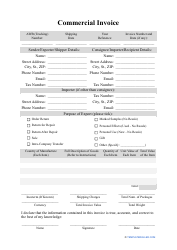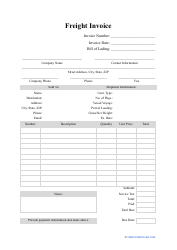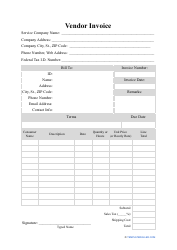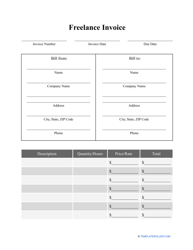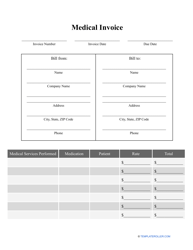How to Invoice as a Contractor: Free Contractor Invoice Template

Invoicing is a vital skill that any independent contractor or freelancer needs to master in order to effectively maneuver different projects, clients, and timelines. Accurate invoicing requires contractors to keep a careful eye on their time and efforts and create invoices for their clients as soon as they complete a project. All in all, consistent and accurate invoicing is a key part of the financial success of any small business.
How to Invoice as an Independent Contractor?
As previously mentioned, proper invoicing is a key part of accounting for any freelance contractor. Regardless of the goods or services you provide to your clients, your contractor invoice should be as clear and easy to read as possible. Having a legible and professional-looking invoice will help ensure that you come across as trustworthy and reliable and get compensated for your work fully and on time.
Here are some tips on invoicing as an independent contractor:
- Come Up With a Consistent Billing Policy . One of the main administrative tasks for any business is figuring out a billing policy that works for you. Make sure to do your research before settling on a rate, a method of payment, and late fees. Coming up with a set of standardized procedures will simplify your workflow and give your clients more clarity. A decided-on billing policy will also come in handy in the event of disputes: if the policies were agreed-upon beforehand by both parties, you will be in your right to file a complaint if something goes awry.
- Record the Time You Spend on Tasks . Knowing how much you usually spend on the work you do will help you optimize your billing methods and rates. Try to record the time you spend on a task or project as soon as you are done with it (even if you bill by the day or by the month). Take advantage of time-tracking and billing software, apps, and publicly-available excel spreadsheets to track your progress.
- Make Invoicing Customer-Friendly . Avoid using non-common abbreviations, make your invoices legible, or use a premade contractor invoice template. Make sure that the party or parties reading your invoice fully understand what they are being charged for. And remember: consistency is key.
Your independent contractor invoice should be as detailed as possible: make sure that your document features important billing information and includes details on payment deadlines. The list of sold goods and provided services should be itemized and detailed.
How to Write an Invoice as an Independent Contractor?
Just starting as a small business owner or self-employed contractor? Remember that there are three main things that make for a good invoicing strategy:
- Keeping track of time.
- Being consistent and organized.
- Utilizing templates to streamline your workflow.
Using a generic contractor invoice template is a great idea - especially in the early days of your business. Make sure that your template adheres to most of the following rules:
- Label your document as an invoice at the very top of the page using bold letters and a nondescript font;
- Consider including a unique logo: this will help set you apart from any competition;
- Include a unique multi-digit identifier and issue date to help make your bookkeeping easier;
- Double-check to see that your template provides up-to-date information about your business name, address, and phone number
- Leave space for a list of rendered services or sold merchandise;
- Provide information about your preferred payment method and billing information;
- Come up with a late payment policy to stick to in case the client fails to pay your invoice on time.
Independent Contractor Invoice Template
Coming up with a cohesive and professional-looking general contractor invoice will help you avoid both serious legal troubles and minor misunderstandings with your customers. Your particular template may require some industry-specific details, but should always include the following information:
- Your client’s full legal name, the name of your business (if applicable), and your contact information.
- Your client’s full legal name and contact information.
- The client’s unique identifier (their account number, ID, proposal number, etc.)
- The issue date and billing period of the invoice.
- An itemized list of all services rendered.
- Totals for each line, itemized deductions, the full due amount, and any extra Texas or fees that the client will be required to pay.
To avoid client conflicts, you should always present invoices that are correct, timely, and detailed.
How to Get a Client to Pay an Invoice?
Unfortunate as it is, independent contractors do have to remind clients about late payments on an invoice from time to time. No one likes chasing clients for payment (and it’s even harder to bring the matter up respectfully if the client failed to respond more than once).
There are several easy hacks that you can try to get your client to pay an invoice while still coming across as collected and professional.
- Make sure your contract clearly states your billing terms and payment information . The agreement you signed or the original quote your customer accepted should always include a set of written payment terms that they will be expected to follow while working with you. Make sure that your customer is fully aware of the payment schedule by bringing it up during the initial negotiation.
- Request a deposit for your work . Having your client pay some part of the overall cost of the project almost always guarantees that you will get paid when you’re done.
- Follow up continuously about any invoices you send. Not all late payments are due to malicious intent . Some clients just forget to pay on time and might appreciate a gentle and friendly reminder.
Related Topics:
